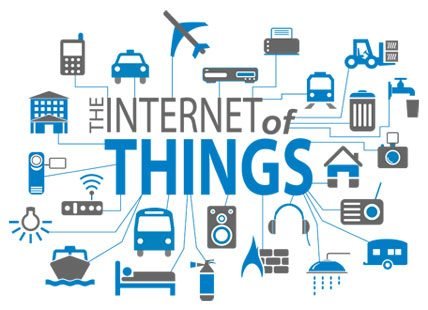
It is a term we hear constantly speak. Internet of Things or IoT by its acronym in English, is a concept a little abstract but that has been gaining enough popularity in the last months. The idea you are trying to represent is pretty well illustrated by its name, everyday things that connect to the Internet, but in reality it is much more than that.
In order to understand what the internet of things is, we must also understand that its foundations are not new at all. For about 30 years we have been working with the idea of making a little more interactive all everyday objects. Ideas like the smart home, also known as the house of tomorrow, have evolved before we realize in the connected home to enter the Internet of things. The Internet of Things powers objects that were formerly connected by closed circuit, such as communicators, cameras, sensors, and so on, and allows them to communicate globally through the use of the network of networks.
If we had to give a definition of the Internet of things probably the best would be to say that it is a network that interconnects physical objects using the Internet. The objects mentioned use embedded systems, or what is the same, specialized hardware that allows you not only the connectivity to the Internet, but also program specific events depending on the tasks that are dictated remotely.
The trick in all this is in embedded systems. These are chips and circuits that compared to, for example, a smartphone, may seem very rudimentary, but they have all the tools necessary to perform very specific specialized tasks. There is no specific type of objects connected to the Internet of things. Instead they can be classified as objects that function as sensors and objects that perform active actions. Of course, there are those that fulfill both functions simultaneously.
In any case the principle is the same and the key is the remote operation. Each of the objects connected to the Internet has a specific IP and through that IP can be accessed to receive instructions. Also, you can contact an external server and send the data you collect.

When will it be between us?
One of the most common questions with the Internet of Things is when it will finally be in our lives. The answer is that it has been for some months now.
Unlike some much more popular technologies among the masses, the Internet of Things has not found its focus of explosion in the consumer market. Maybe the technology is still in early stages, or maybe the big guys in the industry have not seen the right opportunity to pounce on it. Still we have seen how Apple and Google have taken some discreet steps with technologies such as Home Kit and Android @Home.
However, it is the private sector where the Internet of Things is becoming more and more popular.
- The mass production industry: the machinery that is in charge of controlling the manufacturing processes, assembling robots, temperature sensors, production control, everything is connected to the Internet in more and more companies, which allows to centralize the control of the infrastructure.
- Control of urban infrastructure: control of traffic lights, bridges, train tracks, urban cameras. More and more cities implement this type of infrastructures based on the Internet of Things that allow them to monitor the correct functioning of their structures and to adapt their operations more flexibly to new events.
- Environmental control: one of the areas in which the Internet of things is having more success, since it allows access from almost anywhere to information of atmospheric, meteorological, and seismic sensors.
- Health Sector: More and more clinics and hospitals around the world rely on systems that allow health staff to actively monitor patients on an outpatient and non-invasive basis.
There are also Internet applications of Things for transportation, energy industry, and virtually all commercial sectors. As we have said, the great slope is the consumer market, or what is the same, homes, a place that is probably a matter of time for us to see the great explosion of IoT.